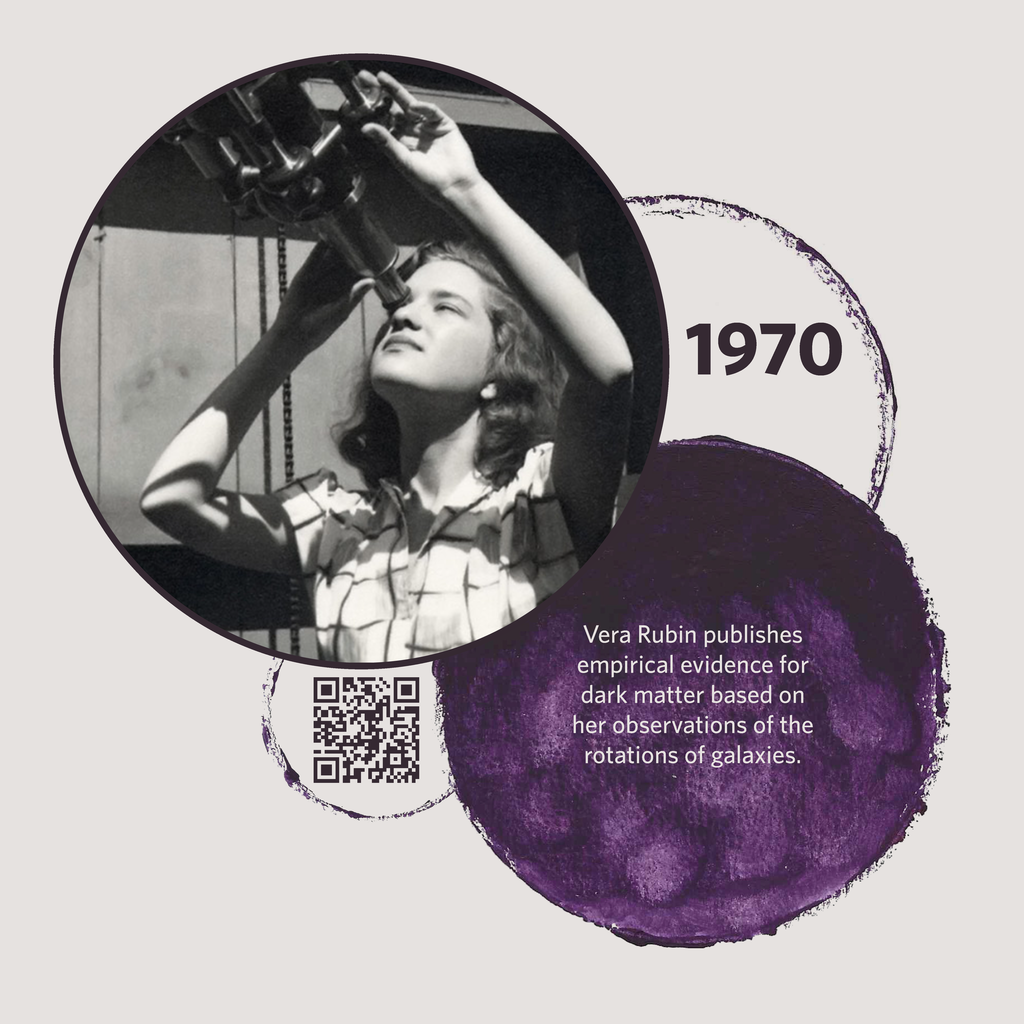1970
Vera Rubin publishes empirical evidence for dark matter based on her observations of the rotations of galaxies.
Feature Image
A photograph of Vera Rubin looking through a telescope at Vassar College.
Vassar College Durrell Archives and Special Collections Library
(Image used with permission.)
Curated Resources
Brittney Borowiec, “Meet Vera Rubin, the Stargazer Who Predicted Dark Matter,” Massive Science, 22 February 2018
Amber Karlins, “Vera Rubin – Astronomer,” The Heroine Collective, 20 December 2018.
“Vera Rubin and Dark Matter: At a Young Age, Vera Rubin Was Fascinated by the Stars, Watching the Night Sky Revolve From Her North-Facing Bedroom in Washington D.C.,” American Museum of Natural History, 2000.
Sarah Scoles, “How Vera Rubin Confirmed Dark Matter: This Famous Astronomer Carved Herself a Well-Deserved Place in History, So Why Doesn’t the Nobel Committee See It That Way?”, Astronomy, 4 October 2016
Zephyr Penoyre, “How One Person Discovered the Majority of the Universe: The Work of Vera Rubin,” AstroBites, 27 December 2016
Stephanie Bucklin, “A History of Dark Matter: No Definitive Answer, but the Search Has Gotten More Interesting Since the 19th Century,” Ars Technica, 3 February 2017
Kent Ford, “Electronic Image Intensification,” Annual Review of Astronomy and Astrophysics, pages 1-23, September 1968
Vera Rubin & Kent Ford, “Rotation of the Andromeda Nebula from a Spectroscopic Survey of Emission Regions,” Astrophysical Journal, pages 379-403, February 1970
Vera Rubin & Kent Ford, “Rotational Properties of 21 SC Galaxies With a Large Range of Luminosities and Radii, From NGC 4605 R=4kpc to UGC 2885 R=122 Kpc,” Astrophysical Journal, pages 471-487, 1 June 1980
|



